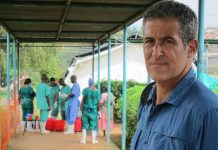
Singapore COVID cases surged in the past weeks and continue to be the highest in Southeast Asia. However, a minister says it is not yet halfway through.
Minister for National Development Lawrence Wong admitted they still have a lot to do. “This is still the first half of the marathon,” the minister said during an interview on CNBC’s “Squawk Box Asia.”
Wong co-heads Singapore’s task force to fight the virus. He said the country expects high numbers of new cases due to “extensive testing” in dormitories that house migrant workers.
These groups are mostly men from other countries in Asia. They accounted for 87.6% of the total 19,410 confirmed cases in Singapore as of Tuesday, according to the health ministry. The cases in those dormitories caused the rise in the number of infections in Singapore over the past month.
“We’re testing not only the workers who are reporting sick — for which the numbers are not very large," he said. "But we’re doing very extensive testing on workers in the dormitories who are well, who are asymptomatic,” said Wong, who is also Singapore’s second minister for finance.
“And so, we are still picking up quite a high number of cases in the dormitories, I think that will remain for some time. It’s a very serious outbreak but we’re making progress in bringing the outbreak in the dormitories under control,” he added.
Coronavirus testing in Singapore
Singapore has one of the highest testing rates worldwide. As of April 27, Singapore held more than 140,000 coronavirus tests. This is equal to around 2,500 tests per 100,000 people, based on a prepared speech that Minister for Health Gan Kim Yong delivered in parliament.
Gan stressed that the country has increased its testing capacity from 2,900 tests a day in early April to 8,000 per day currently. Officials want to reach 40,000 tests a day.
Moreover, the Singapore government implemented a partial lockdown which it refers to as a “circuit breaker” to curb the spread of the virus. These measures included temporary school closures and closure of nonessential spaces. They may gradually reopen next month.
Hotbed for the virus
Experts commended Singapore for handling the coronavirus outbreak before the surge in cases inside migrant worker dormitories.
However, when such cases emerged, many observers wondered why the government did not see the living quarters as a potential hotbed for the virus.
Wong claimed that the living standards in migrant worker dormitories have “steadily” improved over the year. He noted the recreational facilities within the compounds and easy access to amenities.
“The issue is really that these dormitories are designed for communal living, where the workers eat together, they live together and they cook together,” the minister said.
“And despite the best effort at putting in place precautions and safeguards, reminding the dormitories’ operators that these ... nonessential communal activities have to be ceased at the start of the outbreak," he stressed.
"I think the lesson we’ve learned from this experience is that with this pandemic — an unprecedented pandemic — the safeguards were not sufficient and the design of dormitories have to change,” he added.






